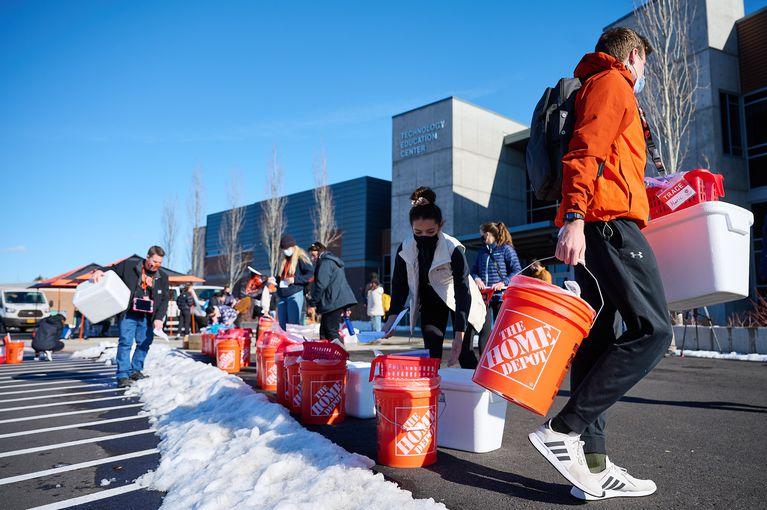
Near real-time gene sequencing of samples from across the state could provide an early warning of a surge in COVID-19 cases to come — or show omicron isn’t gaining steam.
Next week, scientists with Oregon State University’s TRACE-COVID-19 project will begin the process of processing samples that were taken twice a week last month from 40 wastewater treatment plants across the state. Researchers will extract tiny bits of virus RNA from those samples as a key part of the state’s surveillance for the new variant of concern.
As of late Thursday, omicron has been detected in three states — and counting — and on six continents.
Compared to genomic testing that relies on clinical samples taken from people with suspected COVID-19 infections, the wastewater sampling captures signals from a much larger population statewide.
“Everybody that’s connected to a sewer line contributes to the sample,” said Tyler Radniecki, OSU professor of environmental engineering.
“We’re able to sample any virus from any individual in the community who has shed it into the wastewater, whether they are symptomatic, asymptomatic, have gone to a doctor, or not.”
The water samples are filtered so that solids — poop — can be extracted and tested for the presence of Sars-COV-2. The samples that have a high enough concentration of the virus to test positive go through a sequencing process to identify variants of concern — now including omicron.
“We’re looking for regions of the virus that have lots of variability, where we know there will be mutations that make it one variant versus another,” Radniecki said.
Meanwhile, other scientists, like those at the Oregon Sars-COV-2 Genome Sequencing Center at Oregon Health and Science University, are sequencing the viral RNA from clinical samples, generally from nasal swabs used to test for COVID-19. They’re getting a little help from a unique signature the omicron variant produces on PCR tests.
Sequencing clinical samples has its own unique advantages. Scientists tend to recover more intact viral RNA from clinical samples, making it a better way to discover new variants. Sequencing clinical samples also helps public health officials because they can pinpoint individuals with the disease. That information can guide contact tracing, which in turn can help contain the virus.
And Oregon has a particularly strong effort for identifying the genomes of clinical samples of the virus. The state’s research partners have published the genetic sequences of 7.1% of all confirmed COVID-19 cases in Oregon, ranking it 11th in the nation for that metric, according to the Centers for Disease Control and Prevention.
If a variant of concern like omicron is detected, Oregon requires scientists to report it to public health within one working day. The state is also asking its partners to upload the virtual genomes they’ve sequenced to GISAID.org, which makes variant data available to researchers and the public.
Justin Sanders, a professor in the Veterinary School at OSU who’s leading the TRACE project, hopes the work will give local public health agencies some insight not just into where and when omicron arrives in Oregon, but whether it is “more fit” than other variants, an indication of its potential to spread and trigger a fresh wave of infections.
“Once we know that it’s here, that will alert local public health officials, they can increase their case investigations, and really learn more about it. We know very little about omicron at this point,” Sanders said.
To date, there’s little published data on whether the virus is more transmissible or more or less virulent than the delta variant, which currently dominates cases in Oregon. One research paper still awaiting peer review authored by scientists in South Africa indicates omicron is more able to re-infect people who’ve been previously infected with other variants of COVID-19.
This story was originally published by Oregon Public Broadcasting.